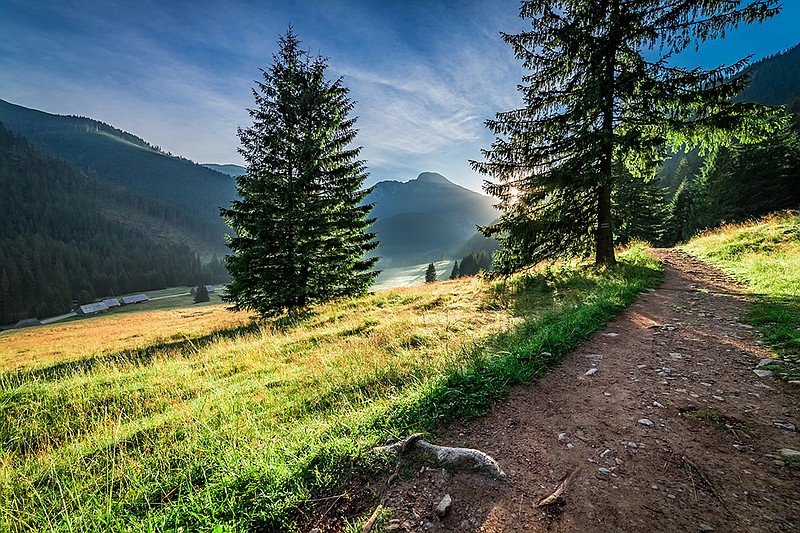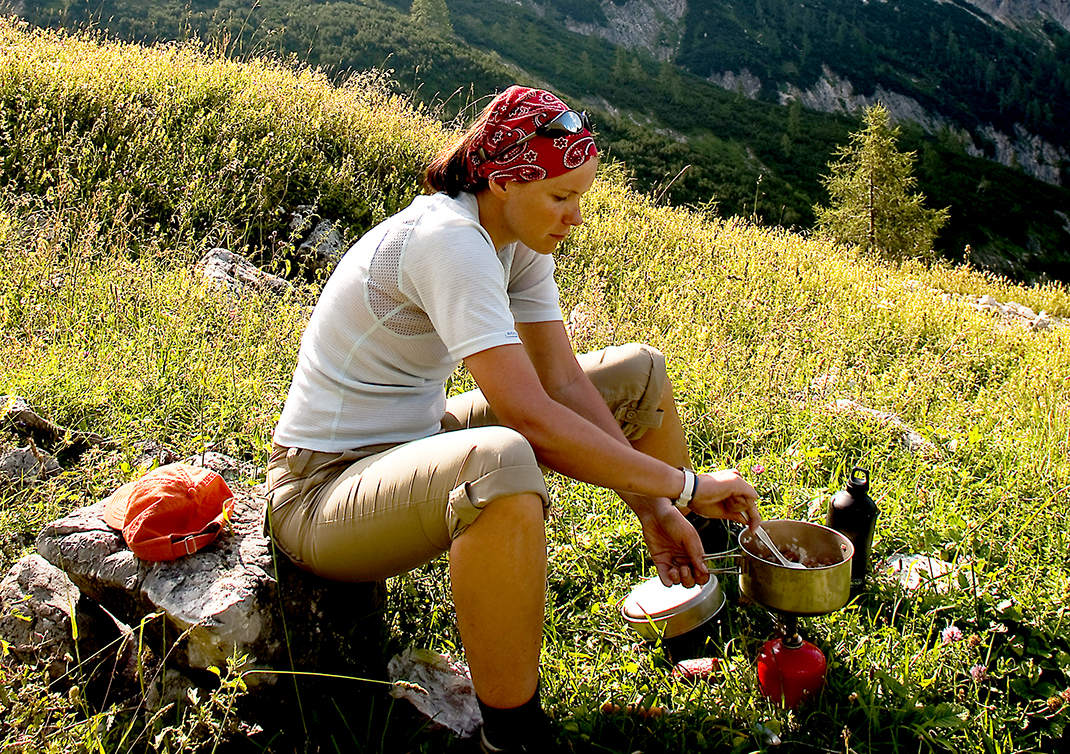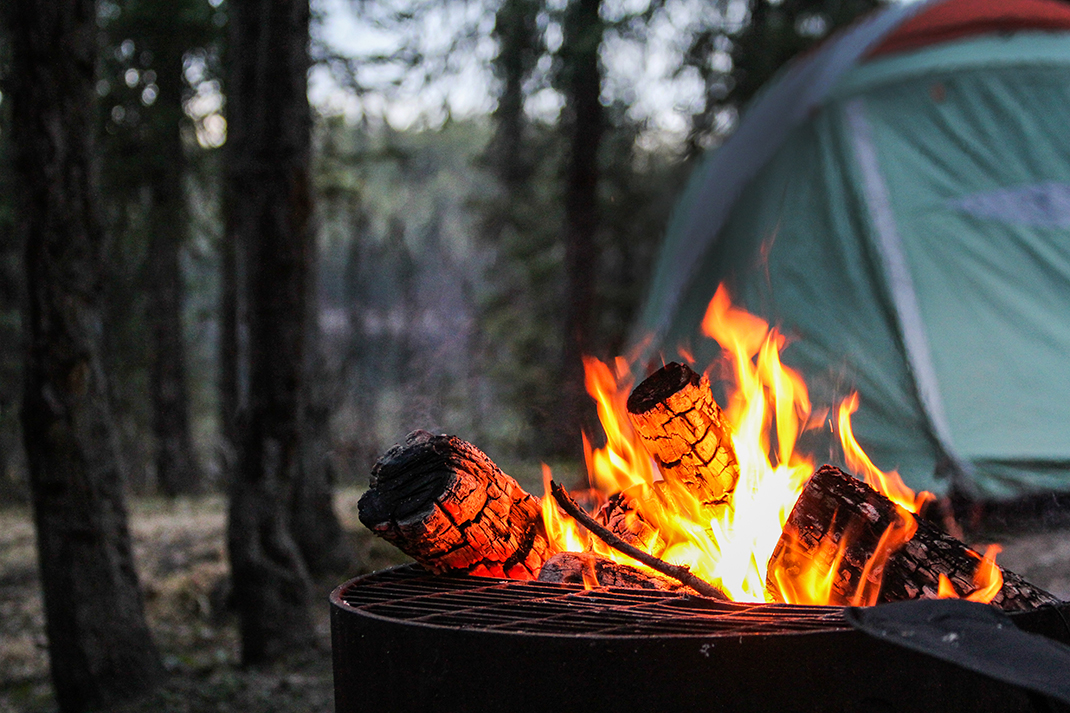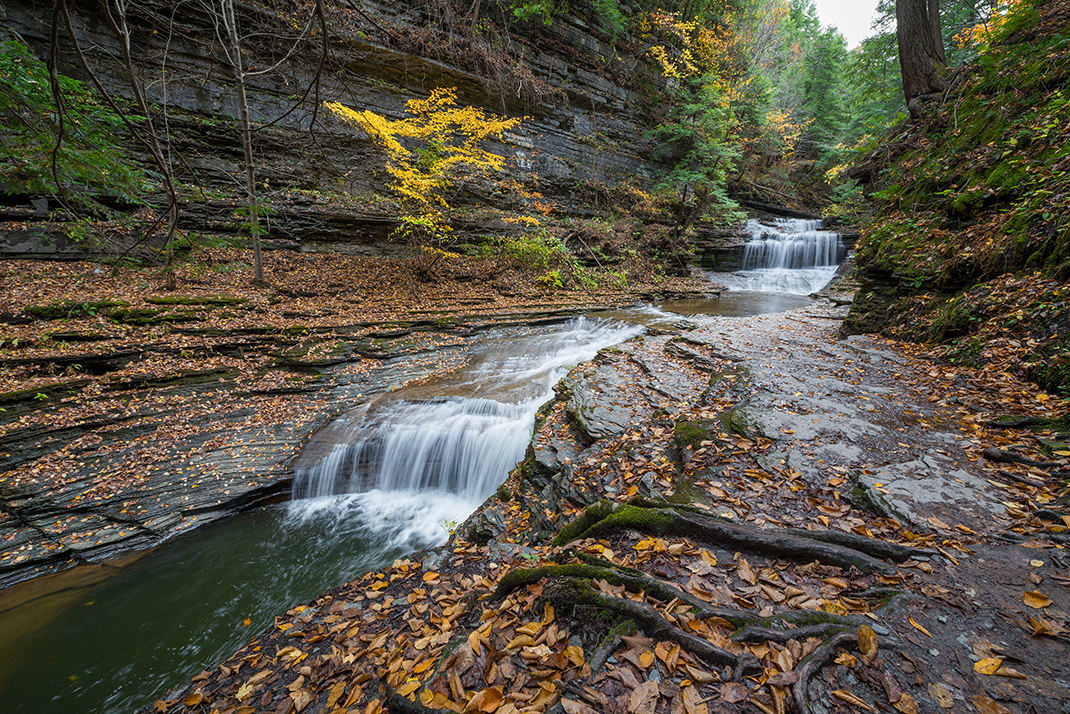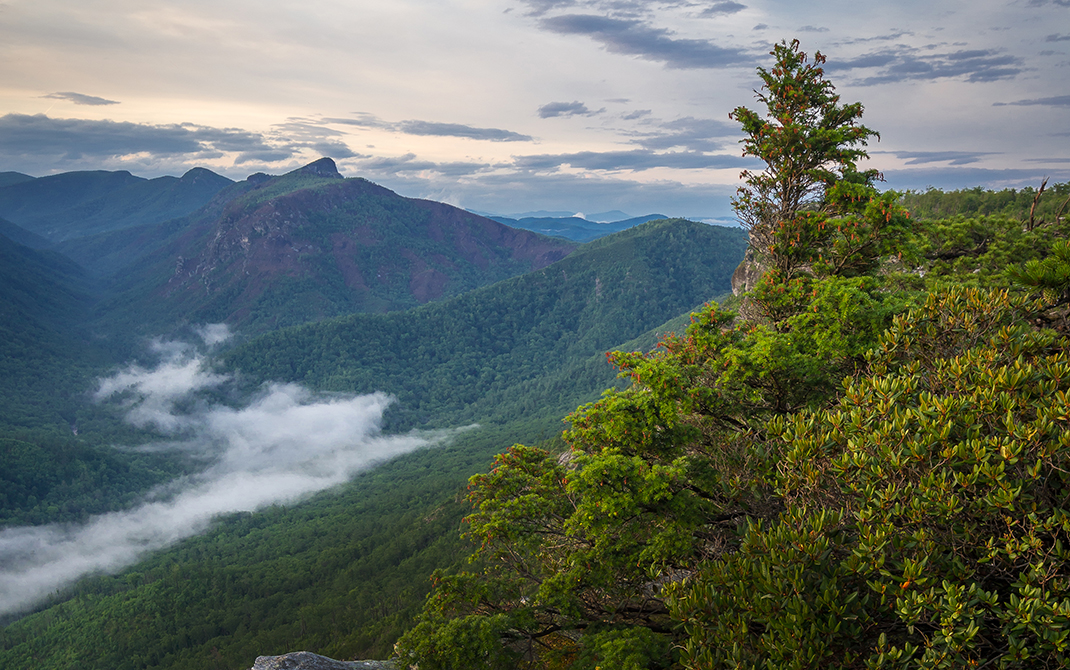I always griped and groaned as a 13-year-old Boy Scout when it came time to pack up at the end of a camping trip. Not because we had to leave, but because we had to do "The Sweep." The Sweep involved every Scout and Scout leader spreading out evenly and walking at a glacial pace, eyes glued to the ground, searching for any piece of refuse or trash. I loathed it because it delayed us heading home and grabbing a delicious road meal at McDonald's or some other fast food joint.
What was the point, anyway, I wondered? It's not like one candy wrapper was going to make a difference - or so I thought.
Now, I realize that the onus for maintaining our environment falls on everyone who uses the outdoors. No one knows that better than the stewards with the Appalachian Trail Conservancy. The trail sees roughly 4 million visitors each year.
"The cumulative impact of all of our visitors is why we all need to follow Leave No Trace," says Marian Orlousky, northern resource management coordinator for the trail.
Last year, the killing of two bears following an attack on a hiker exemplified this. The first bear was mistaken as the problem bear and put down before officials found and euthanized the actual problem bear. Both deaths could have been prevented; it was suspected that food waste and improperly stored camp food attracted the bear to human habitation, leading to the attack.
"That person who had the encounter could have been following all the rules perfectly, but if the people the night or week before did everything wrong, then he pays the price for it," Orlousky says. "It's why we're all responsible."
Thankfully, I eventually grew out of my immaturity. Dozens of camping trips have given me an appreciation for the outdoors, and a frustration at seeing trash on trails and in waterways.
Here are some tips on how to limit your impact on the environment while still enjoying wild places.
Food Waste
» DO: Leave canned goods at home
Canned goods aren't illegal to bring outdoors, but there's no way to safely dispose of metal containers. Any metal you bring with you will have to be packed out, giving you a bigger trash bag to haul.
» DON'T: Burn your food scraps
It takes a seriously hot fire to completely destroy food scraps, and what isn't destroyed will be scavenged by animals, attracting them to your site. Not to mention the smell of burning food will spread far and wide, attracting animals that way, too.
» DON'T: Bury food waste
It may make sense in your head to bury apple cores or banana peels, but they take much longer to decompose in an anaerobic environment. The smell will attract animals, too, which will dig up your trash, disrupting the natural landscape and potentially putting them in harm's way.
» DO: Minimize soap use near water
Even soap marketed as "biodegradable" can contaminate water sources. To disinfect cookware, boil water and wash the dishes at least 200 feet from any water source. Some soaps are better than others, but you should still work to minimize how much you use.
» DON'T: Dump dishwater into a water source
Water leftover from washing dishes is called "gray water." To properly dispose of it, strain it to rid it of any food particles, then cast the water out over a wide area in an arc to disperse it as much as possible and speed up evaporation. Either bury or pack out the remaining food particles.
You have to think about the impact your actions can have on other visitors. Were all out here to enjoy the outdoors, and its only through collective effort that we can preserve it.
Fires
» DO: Keep your fire as small as possible
A roaring bonfire will spread ash and embers across a wide area, potentially sparking wildfires. Regardless, larger fires burn more wood and can scorch the ground around them, leaving surefire markers of human interaction. The larger the fire, the larger the impact it will have on the immediate area of your campsite.
» DON'T: Build a fire ring
If there is an established fire ring, use it. If not, moving rocks and debris to create one will be an obvious sign you were there - the opposite of leave no trace - and will encourage future campers to use the same spot, compounding your "trace."
Mound fires are made on top of mineral soil you dig up from a few inches underneath topsoil. More akin to sand, mineral soil is nutrient-light and supports little life. Creating a mound of mineral soil several inches thick on top of a tarp or ground cloth and building a small fire on top will minimize the damage done to the topsoil and life underneath. The soil will insulate your tarp and keep it from getting burned. If your tarp gets scorched, build a smaller fire next time.
» DON'T: Grab wood regardless of size
Avoid larger logs that will have to burn intensely for hours to completely turn to ash. Only feed your fire the fuel it needs to keep you warm and cook your food. Use smaller, dead sticks for your fire, no thicker in diameter than your wrist.
» DO: Make sure the fire burns to ash
Your goal with a fire should be to burn everything to ash. Scatter the ashes the next morning, after you're sure it's fully burnt out. Leftover unburnt wood is a clear marker of human activity, and will encourage other people to use your spot, which will create a functionally inhabited area.
PoopingMore Info
No. 2 is quickly becoming a No. 1 problem on the AT, Orlousky says. Over the last several years, the trail has played host to multiple outbreaks of norovirus, or “winter vomiting bug.” Trail officials such as Orlousky attribute the spread to improper catholing and disposal of human waste.“No one wants to be hiking and see, smell or step in human waste. People assume because animals do it, it’s fine,” she says. “Not only are you negatively altering the experience of other hikers, you’re introducing something unnatural and foreign to the area.”
» DON'T: Go to the bathroom in or near water sources
Just because fish do it doesn't mean you can. Human waste can contaminate water sources for the surrounding wildlife. All human waste should be disposed of at least 200 feet from any source of water.
» DO: Bring a trowel and make a cathole
This is one of two Leave No Trace-approved ways of going No. 2 outside on the trail. A cathole is roughly 6-8 inches deep and should be covered over completely with soil once you've finished your business.
» DON'T: Burn toilet paper
Soiled toilet paper doesn't burn well or completely. There are two schools of thought for TP: bury it as deep as possible in your cathole and accept that it could take years to completely decompose, or pack it out with you in a ziploc bag. While that may seem unsanitary, it's the best solution for minimizing impact on the environment.
» DO: Pack out feminine hygiene products.
There's no way to burn or bury these without leaving an impact. They don't break down well and the smell can attract animals. Products like the WAG BAG, a sort of super ziploc with odor-neutralizing chemicals, will enable you to pack out any products or waste with you in an odorless and lightweight way.
» DON'T: Urinate on plants
Peeing is a fairly straightforward event in the outdoors - so long as you're 200 feet from a water source - but urinating on plants can negatively affect the plants' roots, as well as attract animals to the urine's salt content. Urinating in soils the aforementioned 200 feet away from water sources is the best option.
» DO: Consider packing out human waste
This requires dedication to Leave No Trace principles and is rather extreme, but some trails have even started requiring it. Western parks such as Denali and Mt. Rainier have mandated all hikers pack out their waste due to high traffic and contamination concerns. It's the only surefire way to ensure you are leaving no trace. If you're feeling hardcore, pack numerous WAG BAGs and, well, do your business in them.
Hiking
When In Doubt
A major LNT principle that can answer most questions is a few simple words: When in doubt, pack it out. If you're wondering how to properly dispose of something in a way that impacts the environment as little as possible, consider taking it with you and disposing of it via routine methods back home. If you think that sounds gross or unsanitary, just think how Mother Nature feels! Packing out everything, waste included, is the only 100 percent, surefire way to ensure you don't leave any negative impact on the environment, and it's a benefit to any other hikers or campers looking to share the same space as you. » DO: Stay single fileHiking single file reduces how much ground is stepped on. This may sound minor, but when you consider how many thousands of hikers could walk where you're walking, it makes a difference.» DO: Plan your route aheadIn a similar vein, having a map and knowing exactly where you're going will keep you from having to travel off trail. This is a safety issue as well. Always bring your map!» DON'T: Approach any animalsThat deer or bird off in the distance is better left alone. Photography with the flash off and the zoom on is a much better way of remembering your trip than trying to get close to animals.» DO: Be respectful and keep your voice downLeave No Trace isn't just for the animals and plants - it's for your fellow hikers, too. Let hikers traveling faster than you pass, and keep your volume to a minimum to keep from disturbing others.Campsite» DO: Leave what you findJust as you are a guest in someone else's home, you are a guest in the outdoors. You wouldn't steal something out of your host's home, right? Same principle applies. As little wood as possible should be used for fires, and everything else should stay as you found it - even the nefarious poison ivy, which serves as an important food source for insect life.» DON'T: Leave trash if you find itYou're not just responsible for your own trash on the trail. If you find any garbage while hiking, you're just as culpable as the person who initially dropped it if you don't pick it up. A few trashbags in your pack (which you should have brought anyway) will help.» DON'T: Make your own campsiteAs the saying goes, the best campsites are found, not made. Clearing dead wood and rocks out of the way to make a campsite is the very definition of leaving a trace that you were there. If you clear out a spot, more hikers could find it and use it later, creating a spot of constant human habitation. Just as with fire pits, your goal should be to leave the spot as though you were never there.» DO: Keep your campsite smallIf you're in a group, don't spread your campsite out over a wide area. Stay close and don't disturb more land than you have to.» DON'T: Store food in your tentBears aren't the only concern for why you should hang a bearbag. Small rodents like mice are vectors for Lyme disease and will sniff out any food you keep in the tent. The higher and farther away from your tent your food is, the better. At least 12 feet off the ground and 100 feet from your campsite are good baselines.» DO: Do a sweep before leavingNo one's perfect, and you could drop or forget some trash on the ground during your stay. After you've packed up, do The Sweep. Take 10 minutes and slowly walk through your campsite and pick up anything you find. You should always aim to leave your campsite cleaner than you found it. After all, if 13-year-old Boy Scouts can do it, so can you.Final ThoughtsWhile one water bottle (or candy wrapper) may not seem like a big deal, when thousands of people don't follow proper Leave No Trace guidelines, it can get ugly."If every person who visited threw just one water bottle out on the trail, that would be literal tons of plastic left out on the trail," Orlousky says.
